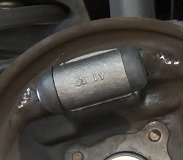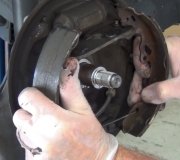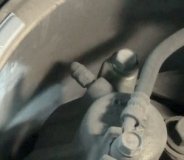Do 'em in any order but just let them gravity-bleed. You don't have to bleed the front unless you just want to get the old fluid out. Once the air is done coming out, close that bleeder screw, then wait for the next one to finish. Don't let the reservoir run dry or you'll have to bleed the whole system.
To prevent the reservoir from running empty while the wheel cylinders are off, prop a stick from the seat to the brake pedal to hold the pedal down an inch or two. Fluid won't run past the lip seals due to gravity. Remove the stick when you're ready to gravity-bleed.
Once all wheels have been gravity-bled and the bleeder screws are closed, stroke the pedal a couple of times, but no more than half-way to the floor, then open each bleeder screw once more. A few little remaining bubbles that washed into the wheel cylinders will spit out. Tighten the screws and you're done.
Brake fluid loves to suck up humidity from the air so the cap must remain on the can of new fluid and on the master cylinder, but you'll need to loosen the master cylinder cap so vacuum doesn't prevent the fluid from running down.
SPONSORED LINKS
Thursday, April 26th, 2012 AT 10:01 PM




